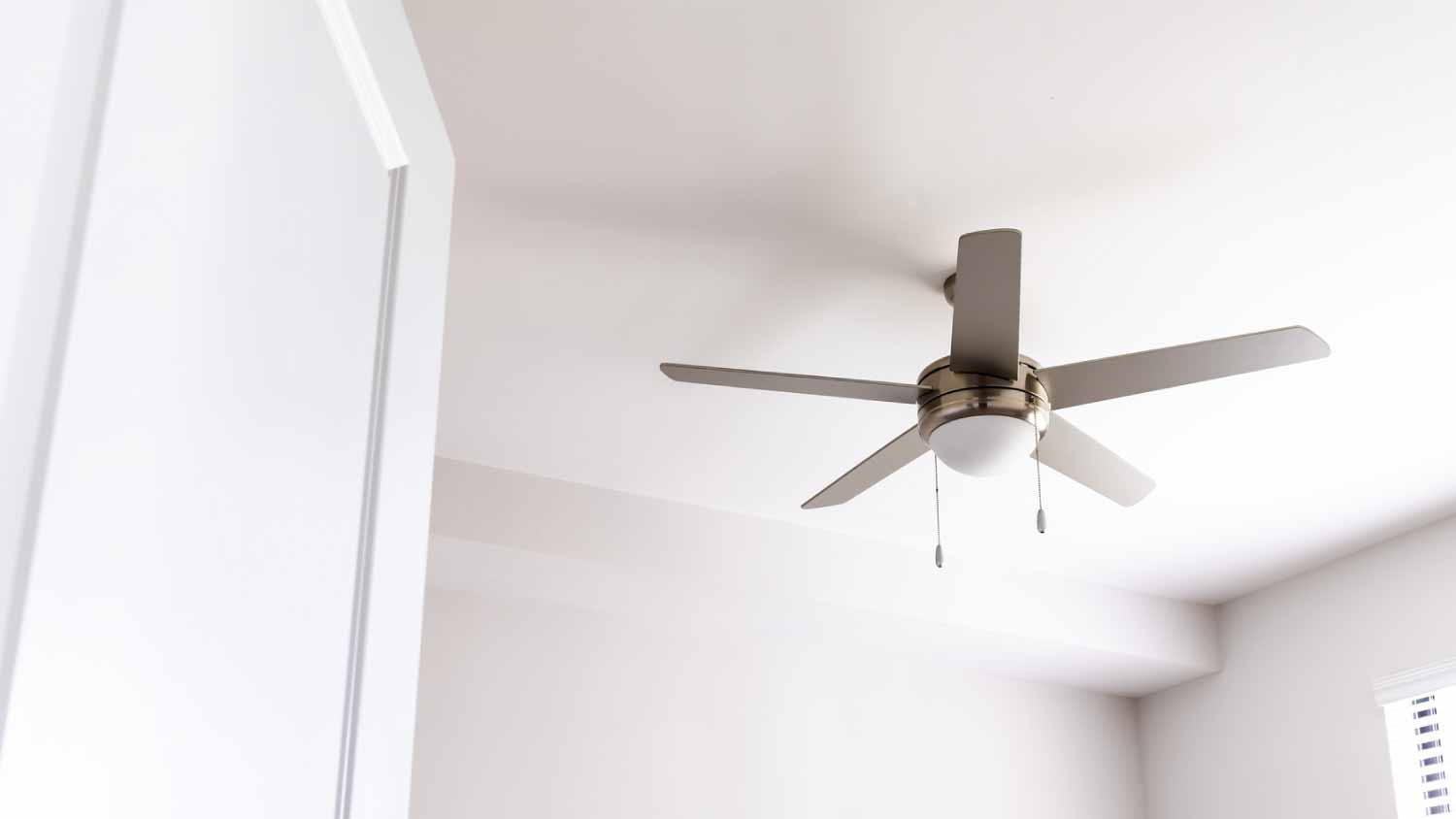How to Add Freon to an AC Unit: A Step-by-Step Guide
Keep your AC in tip-top shape before the hot summer months


Air conditioners that are not cooling properly or have icy-looking coils may have an underlying issue: leaking refrigerant. Freon™ is a common refrigerant that, while no longer in production, is used inside many AC units as a coolant to create cool air. While most air conditioners will never need Freon added, there are some occasions when it is necessary.
Use this guide to learn why your AC unit may need additional refrigerant and how an HVAC pro can add Freon to your AC.
Why Does Freon in an AC Unit Need Replacing?
Freon is the coolant that allows your air conditioner to cool down the air in your home. Also called R-22 refrigerant, Freon switches between liquid and gas forms. The freon circulates inside an AC unit in a closed loop, and because of that, you ideally shouldn’t need to replace it. However, you must replace the lost Freon if the coolant piping has a leak or another issue.
Unfortunately, due to Freon’s negative impact on the environment and ozone, it is no longer in production. An HVAC professional will likely still be able to find Freon for your older AC unit, but new units use other types of refrigerants, like the more favorable R-410A refrigerant.
How Much Does It Cost to Add Freon?
Adding R-22 Freon refrigerant to your AC will cost anywhere from $100 to $350. It can cost as much as $600 for larger AC units requiring more refrigerant. Freon costs $90 to $150 per pound when purchasing through a professional, so besides labor costs, a big portion of the price depends on how much refrigerant has leaked out and needs replacing.
The EPA prohibits the handling of Freon™ without a license. That means homeowners can purchase Freon for their AC but must hire a licensed HVAC pro to handle and install it. In other words, the safest option is to let a pro take this one.
How Often Does Freon Need to Be Added to an AC?
Freon only needs to be added to an AC if there is a leak in the system. Since Freon travels in a closed loop inside the AC unit, you will never run out of it. If your air conditioner is not cooling as expected, your utility bill is higher than normal, or there is another similar issue, recharging your AC by adding new refrigerant could solve the problem. An AC actively leaking refrigerant may have ice on the evaporator coils, make a hissing sound, or give off an exhaust smell.
Should You DIY Adding Freon to an AC Unit?
Adding Freon to an AC unit is not a typical DIY project. It requires working with a dangerous chemical, a pressurized tank, and intricate equipment. Any part of the process going wrong can permanently damage your AC unit or cause injury to yourself. Contact a local HVAC professional for this type of service.
How to Add Freon to an Air Conditioner

Once you have determined that your AC might need more refrigerant, this is the step-by-step process that an HVAC pro follows to add Freon to an AC unit.
1. Determine Whether You Have a Refrigerant Problem
Your AC only needs additional refrigerant if it’s leaking out of the system. Two common signs that you may have a refrigerant leak include your AC blowing out warm air when set to a cool temperature or ice buildup on the coils. Adding Freon to your AC unit could help fix these two issues, and your HVAC professional can let you know if this is the case.
2. Choose the Correct Refrigerant
Make sure your specific air conditioning model actually uses Freon. Many types of refrigerants are available, and Freon or R-22 is not used in newer AC models. Read the manufacturer’s product information or complete the necessary online research to determine if Freon is the right refrigerant for your AC.
3. Put On Safety Gear
Freon is a dangerous chemical that can cause irritation or burns if you come into contact with it. Protection for the skin and eyes is important while working with refrigerant. During this project, your HVAC pro should wear safety goggles, gloves, a respirator, and protective clothing.
4. Consider the Outside Temperature
It has to be above 55 degrees Fahrenheit to add Freon to an AC unit. Once an HVAC tech adds Freon to the AC system, it will move toward the coldest area. In cooler temperatures, this can cause the refrigerant to escape to the outside air rather than remaining inside your AC.
5. Turn Off the Power to the AC
Before proceeding, your HVAC tech will need to turn off the power to your AC. You might have to go to your breaker box and turn off the breaker that powers your AC unit.
6. Attach Refrigerant Gauges to the AC
When you purchase Freon (if you can do so, as typically only licensed HVAC technicians can get their hands on it), it comes in a compressed cylinder with a pressure gauge and hose setup. First, your HVAC pro will attach the blue hose to the low-pressure port on your AC unit’s suction line. Next, they’ll attach the red hose to the high-pressure port on the thin copper line.
7. Turn the AC Back On
Turn the breaker to your AC unit back on and let it run for about 15 minutes. This stabilizes the unit and ensures the pressure gauges get an accurate reading.
8. Hook Up the Hose and Add the Refrigerant
Next, your HVAC tech will attach one end of the yellow hose to the valve on the Freon cylinder and the other end to the valve in the middle of the pressure gauges. They’ll twist the valve near the bottom of the Freon cylinder to open it.
Then they’ll open up the valve near the blue low-pressure gauge for a few seconds, then immediately close it, repeating this (opening and closing) until reaching the desired temperature.
The temperature is displayed on the outdoor unit rating plate. Your pro will only add refrigerant through the low-pressure side and in small increments.
9. Disconnect the Hose and Gauges
With enough refrigerant added to reach the desired temperature, your HVAC tech will turn off the blue low-temperature valve and close the knob at the bottom of the Freon cylinder. Then, they’ll disconnect all of the hoses and re-install the caps.
10. Fix the Underlying AC Issue
Adding Freon to your AC is just a temporary fix. An HVAC pro will need to figure out why the refrigerant was leaking and make the necessary repairs to prevent future leaks. Only a licensed HVAC professional should complete this work, so reach out to one in your area.
How to Prevent a Refrigerant Leak in Your AC
Regular maintenance of your AC system is crucial to preventing a refrigerant leak. Having your AC serviced at least once per year by a professional HVAC technician is ideal. During this tune-up, the pro will look out for signs that a leak could happen and make any necessary repairs to prevent it. The technician will also top off your refrigerant if it is below the necessary level.
Frequently Asked Questions
While it is possible to add Freon to your AC unit yourself, it is not recommended. In fact, the U.S. Environmental Protection Agency (EPA) prohibits the handling of Freon without a license. Freon is a dangerous gas that can cause irreversible damage to your AC or yourself if not installed correctly. It is worthwhile to hire a professional to add Freon to your AC.
The cost to add Freon to an AC ranges from $100 to $350. It can increase up to $600 for large AC units requiring much more coolant. The cost also depends on how much refrigerant your unit needs. If only a small amount of Freon leaked out, your cost would be on the lower side. A complete replacement of all the required refrigerant can get expensive.
Freon will go in the refrigerant lines near the back of your AC unit. Look for small ports with caps on a thin copper line—the Freon goes into those ports. You are best off hiring a licensed HVAC professional who can complete the job safely and correctly.





- Furnace Repair
- Air Conditioning Repair
- HVAC Repairs
- Furnace Installation
- Wood & Pellet Stove Repair
- Dehumidifier & Humidifier Repair
- Heat Pump Companies
- Swamp Cooler Repair
- Wood Stove Services
- HVAC Companies
- Commercial A/C Repair
- Geothermal Installation
- Air Conditioning Installation
- Boiler Repair
- 24 Hour Furnace Repair
- Geothermal Repair
- Heat Pump Repair
- Humidifier Installation
- Thermostat Repair
- Thermostat Installation
- Nest Installation
- Heating & Cooling
- Heating Repair
- Furnace Cleaning
- Furnace Tune-Up
- HVAC Technicians
- Subcontractors
- Furnace Maintenance
- Plumbing & Heating Companies
- Wood Stove Inspection
- Mini Split Installation
- Wall Heater Repair
- Duct Installers
- What Is Freon? Everything You Should Know About the Refrigerant
- Signs of AC Freon Leaks and What You Should Do
- 6 Signs You May Have an AC Coolant Leak and Tips to Prevent It
- Freon Eating Copper Piping in Your Freezer? Here’s What to Do About It
- If You’ve Lost Your Cool, Here’s Who to Call to Fix the AC
- How to Fix an AC Leak: A Step-by-Step Guide
- How Long Do AC Units Last? Here’s the Average Life Span
- 11 Reasons Your AC Is Blowing Hot Air
- AC Constantly Running? Here Are 9 Likely Reasons Why
- 7 Common Reasons Why Your AC Stopped Working (and How to Fix It)











